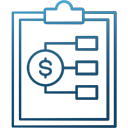Track Every Expense for 30 Days
Pick one method you will actually use daily: a simple notebook, a spreadsheet, or an app. Consistency beats perfection, and a two-minute daily check-in prevents unpleasant month-end surprises.
Track Every Expense for 30 Days
Record coffee runs, convenience fees, ride shares, and small online purchases. When Maya tracked for thirty days, late-night takeout totaled one hundred eighty dollars—money she redirected toward a stubborn credit card balance.
Track Every Expense for 30 Days
Highlight periodic costs like car registrations, school activities, gifts, and annual renewals. Turning these into monthly amounts reveals the true picture, helping you avoid frantic scrambles when those bills arrive.






